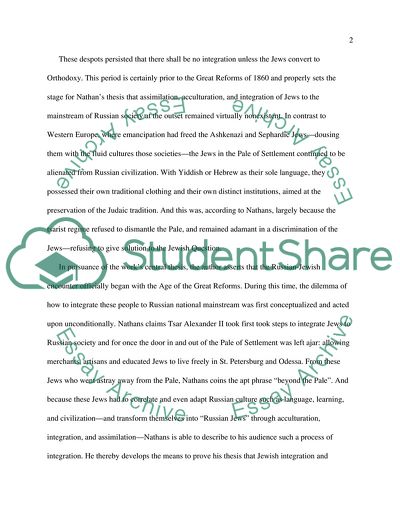Cite this document
(The Jewish Encounter With Late Imperial Russia Essay Example | Topics and Well Written Essays - 1500 words, n.d.)
The Jewish Encounter With Late Imperial Russia Essay Example | Topics and Well Written Essays - 1500 words. https://studentshare.org/history/1716231-book-review-of-beyond-the-pale-the-jewish-encounter-with-late-imperial-russia
The Jewish Encounter With Late Imperial Russia Essay Example | Topics and Well Written Essays - 1500 words. https://studentshare.org/history/1716231-book-review-of-beyond-the-pale-the-jewish-encounter-with-late-imperial-russia
(The Jewish Encounter With Late Imperial Russia Essay Example | Topics and Well Written Essays - 1500 Words)
The Jewish Encounter With Late Imperial Russia Essay Example | Topics and Well Written Essays - 1500 Words. https://studentshare.org/history/1716231-book-review-of-beyond-the-pale-the-jewish-encounter-with-late-imperial-russia.
The Jewish Encounter With Late Imperial Russia Essay Example | Topics and Well Written Essays - 1500 Words. https://studentshare.org/history/1716231-book-review-of-beyond-the-pale-the-jewish-encounter-with-late-imperial-russia.
“The Jewish Encounter With Late Imperial Russia Essay Example | Topics and Well Written Essays - 1500 Words”. https://studentshare.org/history/1716231-book-review-of-beyond-the-pale-the-jewish-encounter-with-late-imperial-russia.


